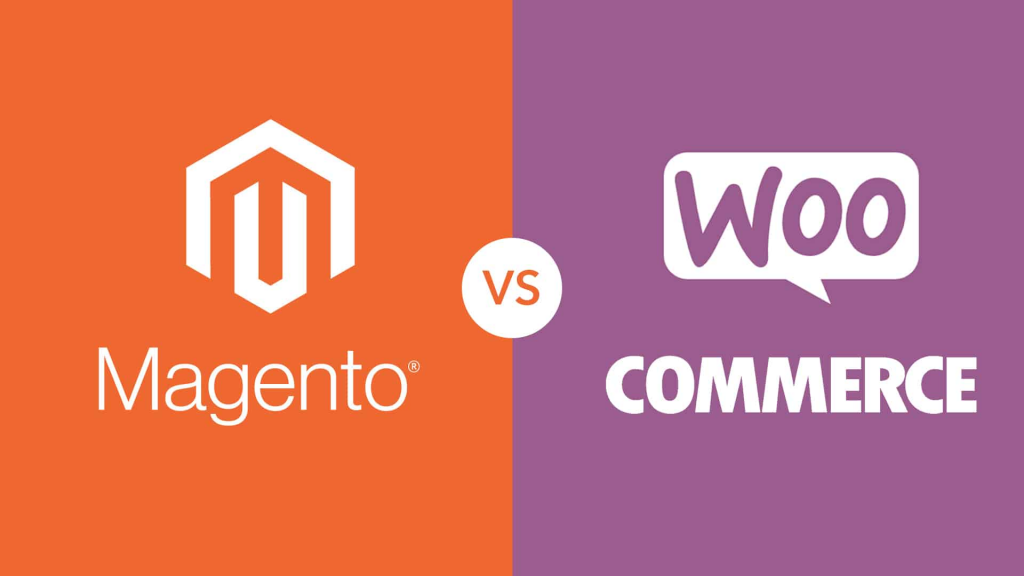
Choosing Between Magento and WooCommerce: A Comparative Analysis of eCommerce Platforms
As you embark on the journey of establishing your online store, the decision between Magento and WooCommerce becomes crucial. These two leading eCommerce platforms, Magento and WooCommerce, offer a plethora of features to enable the creation of a robust online store and facilitate profitable ventures.
This article aims to provide an in-depth comparison of Magento and WooCommerce, shedding light on their respective strengths and weaknesses. By delving into the pros and cons of each platform, we aim to assist you in making an informed choice and selecting the platform that aligns best with your specific requirements.
A Comparative Overview: Magento vs WooCommerce
To gain a better understanding of these two renowned eCommerce platforms, let us provide a brief overview of their distinctive features and highlights.
Magento: An Introduction
Formerly known as Adobe Commerce, Magento serves as a comprehensive eCommerce platform that empowers businesses to establish online stores, facilitate secure payment transactions, and effectively manage product inventories. It offers an open-source community edition, available for free download, as well as premium solutions that provide additional features, cloud hosting, and dedicated support.
WooCommerce: A Brief Introduction
WooCommerce, on the other hand, is an open-source eCommerce platform that is built on the WordPress framework, renowned as the world’s most widely used website builder. By leveraging WooCommerce, users can effortlessly create and customize online stores, process payments, manage inventory, and more. As it is built on WordPress, it benefits from seamless integration with a vast array of WordPress plugins and themes, enabling users to expand and enhance their eCommerce ventures.
While both platforms share the characteristic of being open-source software, allowing for extensibility through extensions and customization through templates, they possess unique strengths and weaknesses that set them apart.
Key Considerations for Your eCommerce Platform
When selecting an eCommerce platform, there are several essential factors to consider, particularly if you are at the initial stages of establishing your online store. These fundamental considerations play a crucial role in determining which eCommerce solution best suits your business requirements.
- Budget: Evaluate the costs associated with starting and maintaining your online store, including both upfront expenses and recurring fees that could impact your business operations.
- Ease of Use: Assess the platform’s user-friendliness, particularly for beginners. Look for intuitive interfaces and streamlined workflows that simplify the process of managing your online store.
- Payment Methods: Ensure that the platform supports multiple payment gateways, enabling seamless transactions. If your business requires specific payment methods, verify that the platform accommodates them.
- Scalability: Consider the platform’s ability to scale alongside your business growth. As your operations expand, you will need an eCommerce solution that can accommodate increased traffic, product inventory, and customer demands.
These are foundational considerations, and depending on the nature of your business, you may also want to explore additional features such as inventory management, tax calculations, invoicing capabilities, and more.
Comparing the Costs of Magento and WooCommerce
When it comes to cost, startups often prioritize this factor in their decision-making process. Evaluating the expenses involved in setting up an eCommerce website is crucial, considering how these costs may escalate as you require additional resources, add-ons, and other services.
Cost of Magento eCommerce Platform
Magento offers two different versions: the open-source version, also known as the community edition, and Adobe Commerce, which includes paid plans.
The Magento open-source version can be downloaded and self-installed on any hosting provider. However, it does not include all features and lacks support.
Adobe Commerce offers two paid plans: Commerce Pro and Manager Services. The Commerce Pro plan includes Adobe applications, support, deployment tools, CDN, 50GB of testing, DDoS protection, WAF, and more. The Manager Services plan provides additional features such as designated cloud infrastructure, custom site monitoring, personalized run book, go-live process coaching, dedicated escalation management, and more.
To obtain specific pricing details for each plan, it is necessary to contact the sales team and request a quote.
It is important to note that even the Magento community version is not inexpensive. While the core software can be downloaded for free, you will need at least a VPS hosting plan or a cloud host such as Amazon Web Services to run it. This means that even if you opt for the free version, your hosting expenses will be considerably higher than with a shared hosting plan.
Additionally, if you choose to purchase paid extensions and themes or hire a developer to work on your Magento store, these expenses will significantly increase your overall costs.